Abstract
Although the total growth of both zoopathogenic and saprophytic fungi on cycloheximide media was consistently less than that on the control without the antibiotic, a progressive increase in the growth rate of these organisms occurred during exposure to the drug. The extent of this change depended upon the concentration of cycloheximide, the species and strain of the test organism, and the duration of exposure. Significant alterations were also observed in the macroscopic appearance of the colonies. The results of this investigation agree with those of previous studies regarding the value of cycloheximide in selective isolation media, but there were discrepancies with respect to the degree of sensitivity of several of the organisms studied. The increase in the rate of growth on cycloheximide media may indicate an induced adaptation to the drug.
Full text
PDF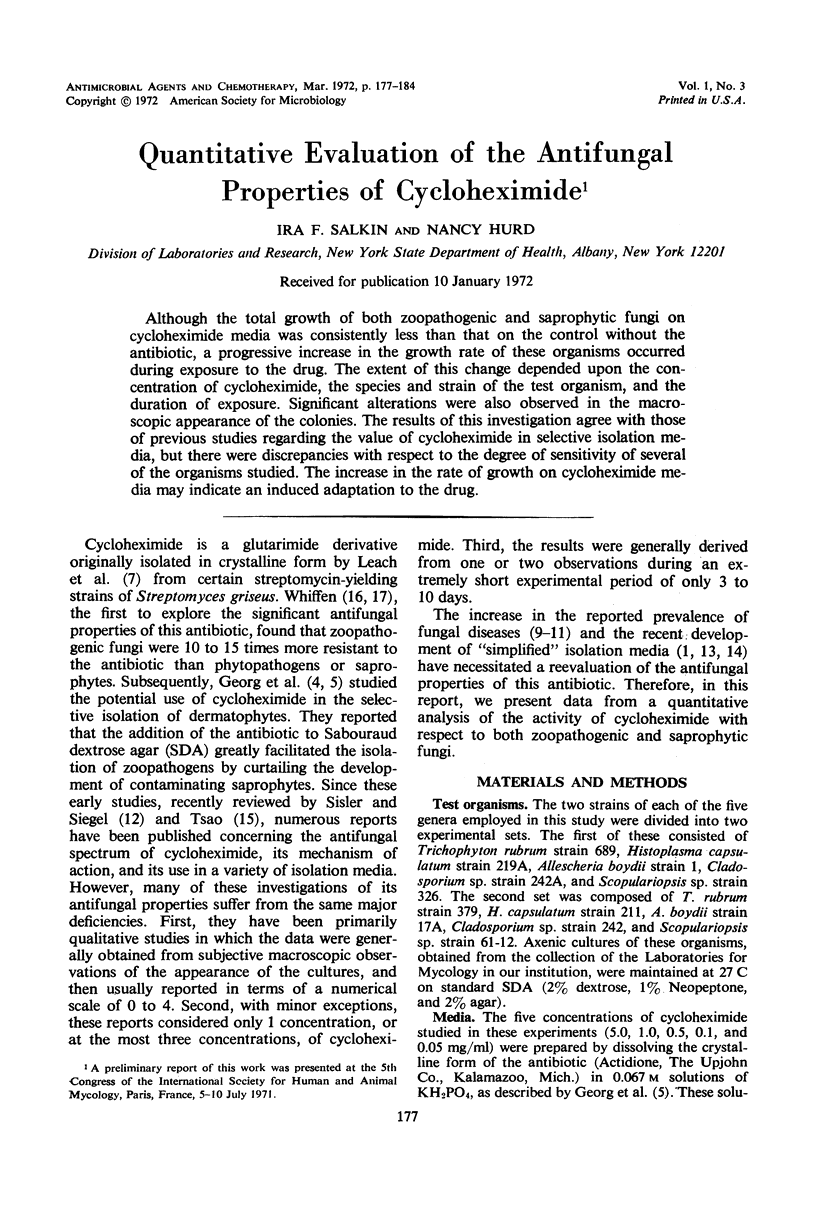
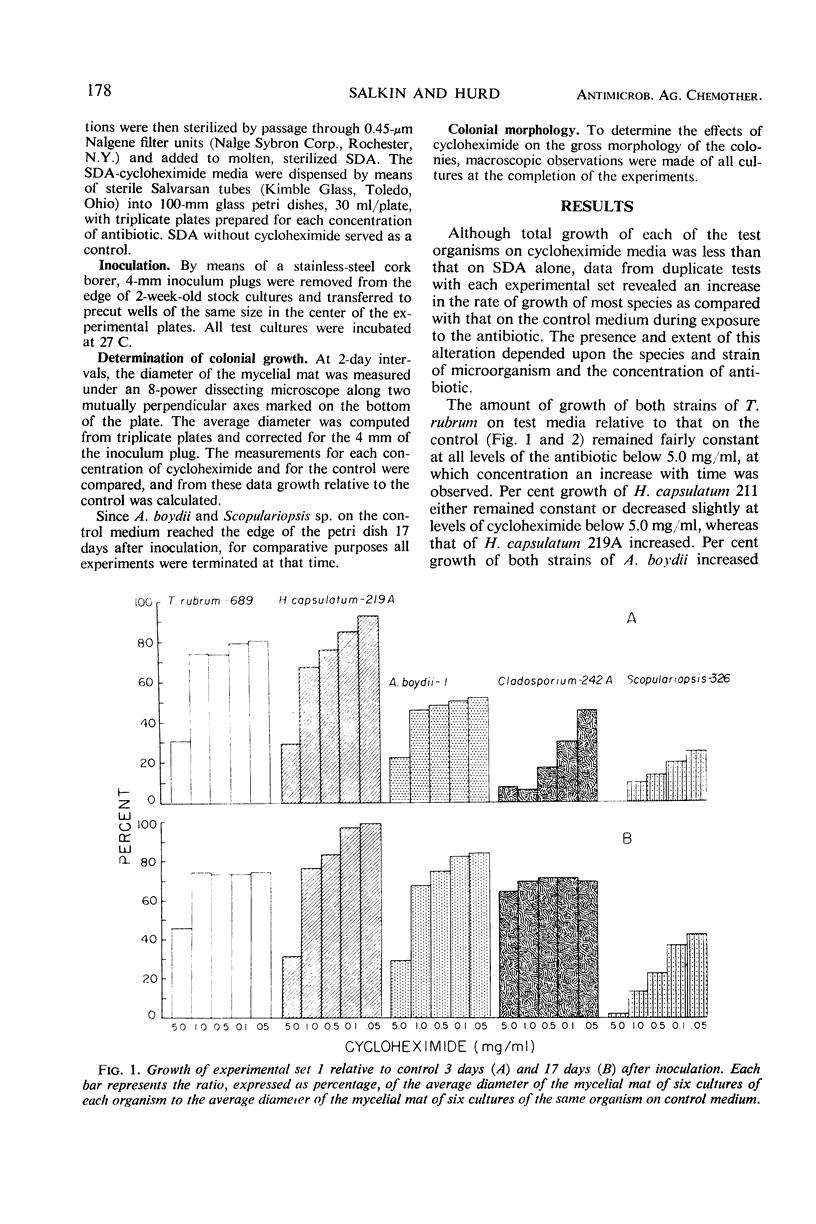

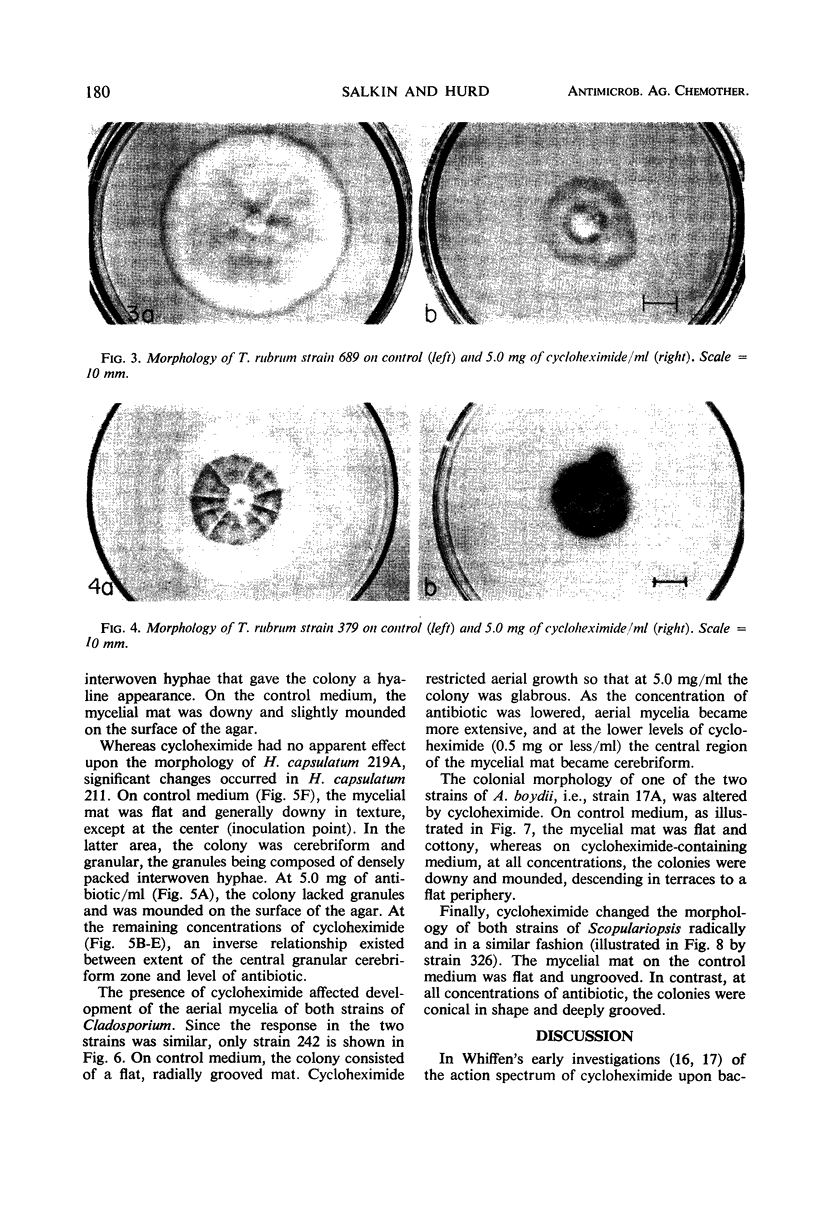
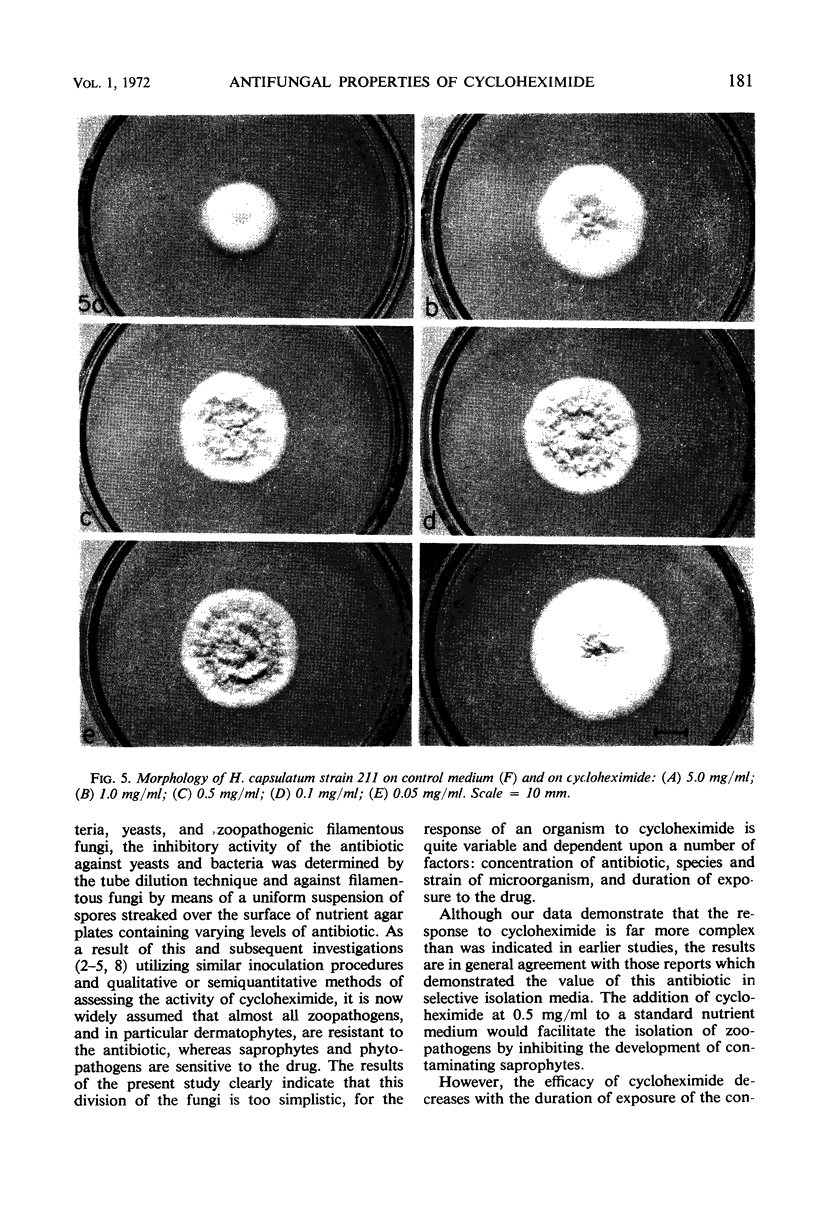
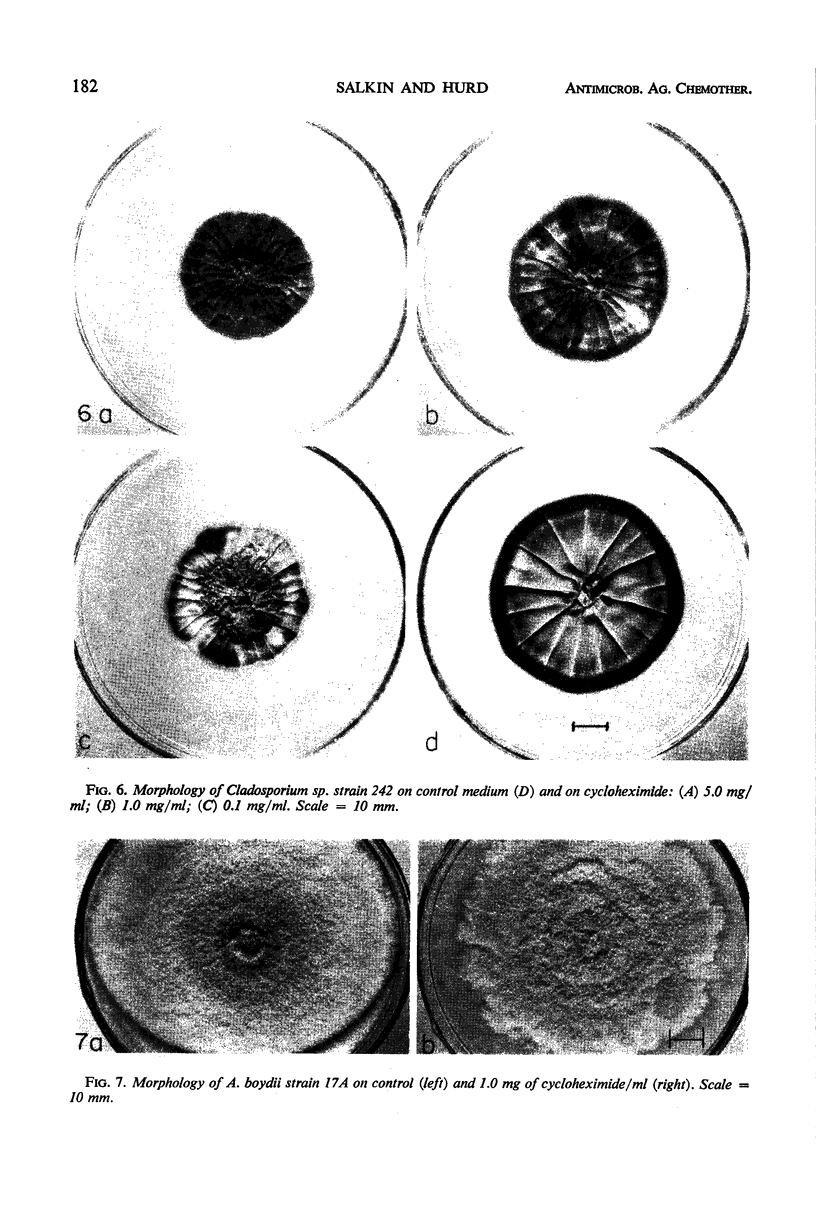
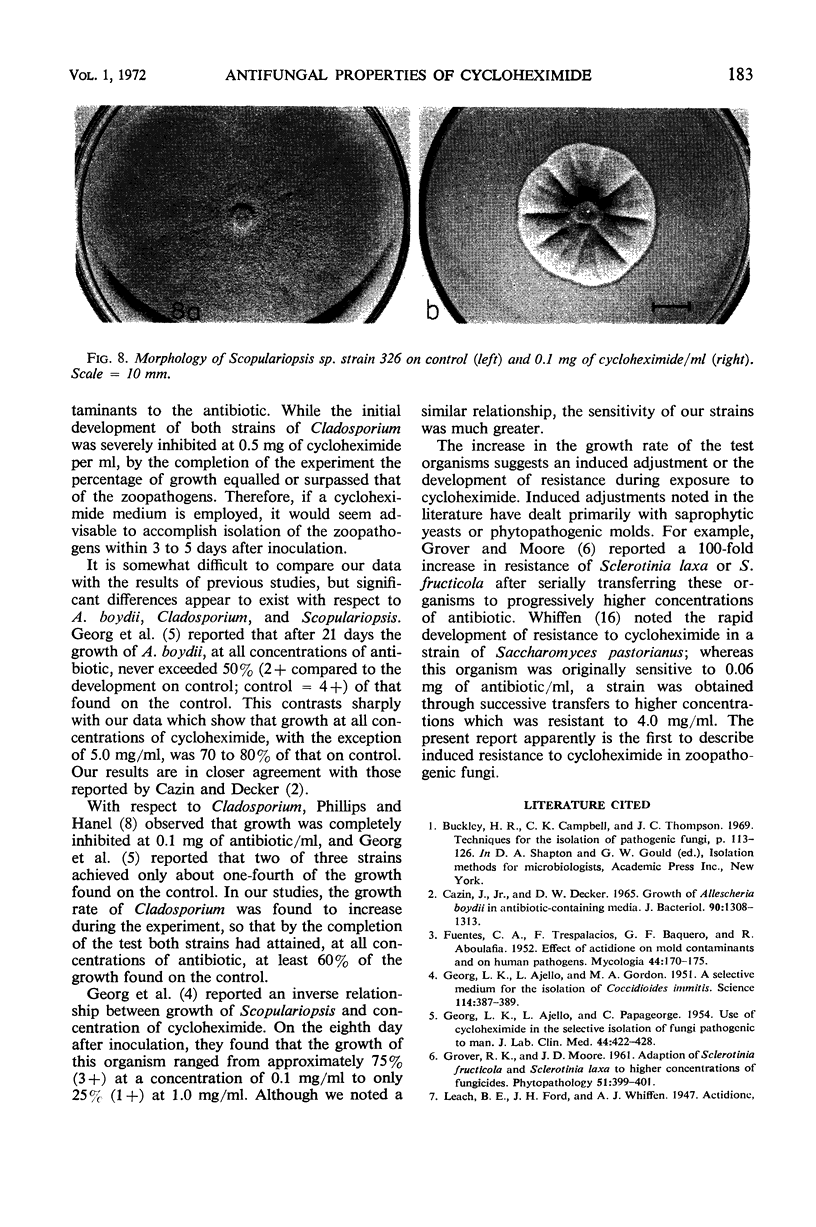
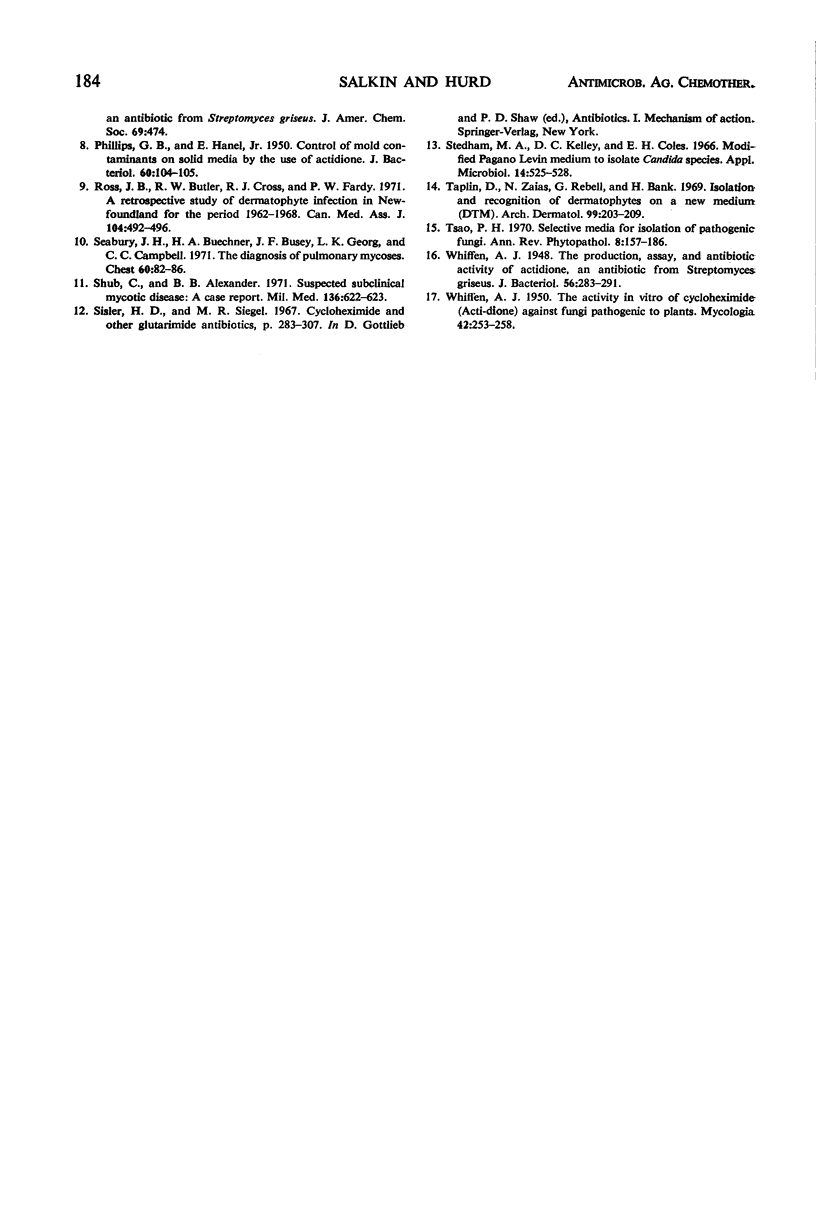
Images in this article
Selected References
These references are in PubMed. This may not be the complete list of references from this article.
- Cazin J., Jr, Decker D. W. Growth of Allescheria boydii in anitbiotic-containing media. J Bacteriol. 1965 Nov;90(5):1308–1313. doi: 10.1128/jb.90.5.1308-1313.1965. [DOI] [PMC free article] [PubMed] [Google Scholar]
- GEORG L. K., AJELLO L., GORDON M. A. A selective medium for the isolation of Coccidioides immitis. Science. 1951 Oct 12;114(2963):387–389. doi: 10.1126/science.114.2963.387-a. [DOI] [PubMed] [Google Scholar]
- GEORG L. K., AJELLO L., PAPAGEORGE C. Use of cycloheximide in the selective isolation of fungi pathogenic to man. J Lab Clin Med. 1954 Sep;44(3):422–428. [PubMed] [Google Scholar]
- PHILLIPS G. B., HANEL E., Jr Control of mold contaminants on solid media by the use of actidione. J Bacteriol. 1950 Jul;60(1):104–105. doi: 10.1128/jb.60.1.104-105.1950. [DOI] [PMC free article] [PubMed] [Google Scholar]
- Ross J. B., Butler R. W., Cross R. J., Fardy P. W. A retrospective study of dermatophyte infection in Newfoundland for the period 1962-1968. Can Med Assoc J. 1971 Mar 20;104(6):492–496. [PMC free article] [PubMed] [Google Scholar]
- Shub C., Alexander B. B. Suspected subclinical mycotic disease: a case report. Mil Med. 1971 Jul;136(7):622–623. [PubMed] [Google Scholar]
- Stedham M. A., Kelley D. C., Coles E. H. Modified Pagano Levin medium to isolate Candida species. Appl Microbiol. 1966 Jul;14(4):525–528. doi: 10.1128/am.14.4.525-528.1966. [DOI] [PMC free article] [PubMed] [Google Scholar]
- Taplin D., Zaias N., Rebell G., Blank H. Isolation and recognition of dermatophytes on a new medium (DTM). Arch Dermatol. 1969 Feb;99(2):203–209. [PubMed] [Google Scholar]
- Whiffen A. J. The Production, Assay, and Antibiotic Activity of Actidione, an Antiobiotic from Streptomyces griseus. J Bacteriol. 1948 Sep;56(3):283–291. [PMC free article] [PubMed] [Google Scholar]








